Intermediate & Advanced Injury Care For Dogs
Welcome back to our Daily Dog Tag series aimed at helping you learn how to “Prepare Yourself and Your Pet for Emergencies.” Today we will be looking at a few types of intermediate and advanced injury care for dogs. As has been stated previously, please talk to your vet about this information.
Today’s guest post is Part 3 in the series Preparing Yourself And Your Pet For Emergencies by Michael Salter from Springhill Associates. Special thanks to Emily and Franny for their modeling skills and Alice G Patterson Photography. Disclaimer: This advice is not meant as a substitute for veterinary care or treatment.
Wild Animal Encounters
With most encounters between wild animals and your companion, it is wise to assume that contact with rabies has occurred. For this reason alone, please keep your pet’s inoculations current. Treat any wounds on your pet as usual and proceed immediately to your vet. Transporting your companion to the vet is very important if your animal has been stuck with porcupine quills, bitten by a snake, or stung by a scorpion or an insect as definitive treatment will often include anesthetizing your companion.
Skunk Encounters
If the wild animal encounter was with a skunk involving only a spray (no bites or scratches), the best treatment is first to wipe the affected area of fur with paper towels to remove as much of the oily residue as possible. Then bathe your pet in warm water and a mixture of 1 teaspoon Dawn brand dish soap, 1 quart hydrogen peroxide, and ¼ cup baking soda (for up to a 40-pound animal, more may be needed for larger pets). Mix in an open bucket as this will foam. Wash the affected area several times and save a full body bath for last. There are also commercial treatments available, but you may not have one on hand if a spraying incident occurs. Unless you suspect your pet was sprayed in the eyes, there is usually no need to contact your vet at the time. Just be sure to mention it on your next vet visit. If you suspect a spray in the eyes, an eye wash by the vet may be needed.
Trauma
Trauma in the life of our companion animals is something we do not want to see. But it is important to prepare yourself for appropriate action in the event of an accident or similar emergency. For our purposes, today, “trauma” is classified as “blunt” from an impact or a fall, or “penetrating” as in a stab wound or impalement.
First, evaluate the scene to determine if it is safe for you to approach your pet. Assess the injuries and control bleeding if necessary. Check for shock (see below). If the trauma is caused by an impalement injury, do not remove the object. Allow the vet to do that in a sterile environment with your pet under anesthesia. If a leg is broken, immobilize the leg above and below the break with a rigid object such as a board. Pad the leg with towels or old clothes and secure the rigid object to the leg with wraps of rolled gauze. Immediately contact your vet or urgent care facility and transport your companion as quickly as possible.
Shock
Shock is often related to a traumatic injury event. Symptoms of shock include weakness, coldness, rapid breathing, or pale/graying gums. To treat for shock, cover the animal with a towel or blanket for warmth. Elevate the hind end to increase blood flow to the heart, lungs, and brain unless there is an injury to the hind quarters. Transport to the vet or urgent care facility.
Cardio-Pulmonary Resuscitation
Yes, it is possible to do CPR on an animal. It is difficult to learn by reading, but perhaps your vet may be able to give you some hands-on pointers. This skill is also often taught in pet emergency care classes.
Check for a pulse on the “inside wrist” (front or back legs), over the heart, or on the femoral artery inside the thigh. If there is no pulse, prepare to perform CPR.
Place the animal right side down on the ground or another hard surface. Give four to five quick breaths by sealing your hand around the animal’s nose and blowing through your hand. Locate the heart by bending the left front leg at the elbow and bring the elbow back to the chest. The point where the elbow touches the body is where to place your hands. Place one hand on top of the other and perform 30 compressions. Give two more breaths and 30 more chest compressions. Compressions should be about one-third to one-half the width of the chest and be at a rate of about 100 compressions per minute.
After each breath administration, give dogs and cats an “abdominal squeeze” to help push blood from the organs back to the heart. Place one hand along the spine and one hand along the lower abdomen and gently squeeze with both hands. Check for a returning pulse about every two minutes.
If after 15 minutes the animal doesn’t respond, you have done all you can to save the animal. The CPR “success rate” for animals is about 20 percent.
Conclusion
While these topics can be uncomfortable to think about, give your pet the best care possible. Please consider talking to your vet about obtaining hands-on training for pet emergencies, including injury care for dogs.
In our next installment, we will examine emergencies that require evacuation and how that can affect animals in our care.
About Springhill Associates: Based in Georgetown, New York, Springhill Associates offers a range of services including first aid training, wilderness skills, and assistance in writing grants. Michael can teach proper training in various types of emergency & disaster preparations and CPR & first aid training, including “Pet First Aid and Disaster Response.” He has received training from the Emergency Care and Safety Institute as well as other sources over the years and has been certified as an ECSI Instructor.



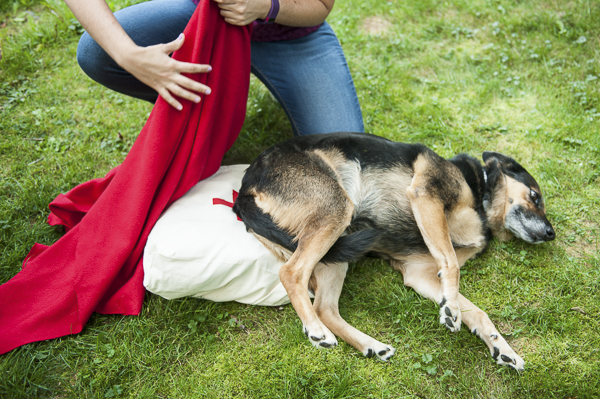
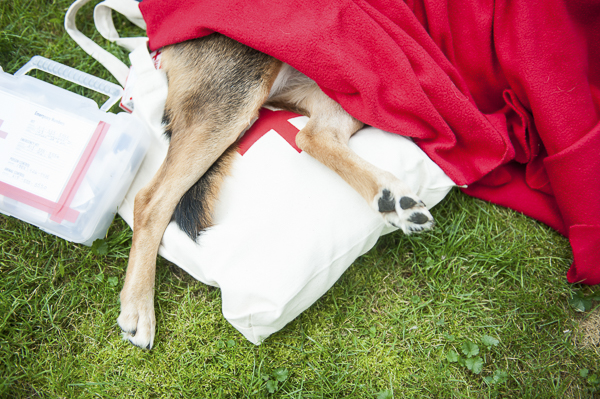
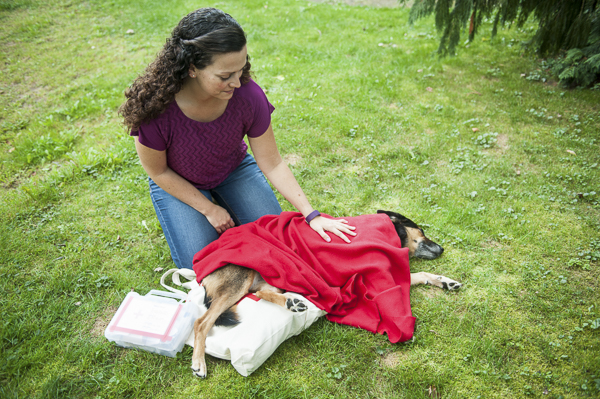
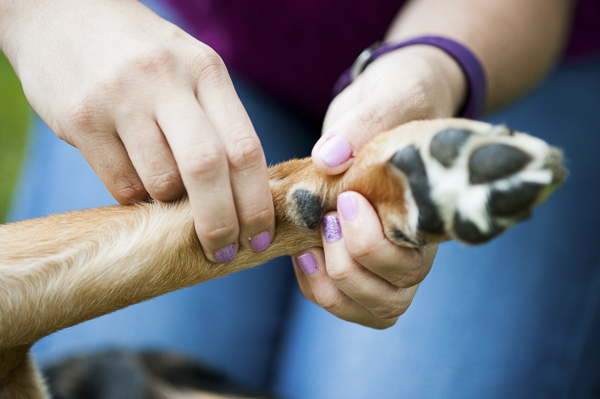
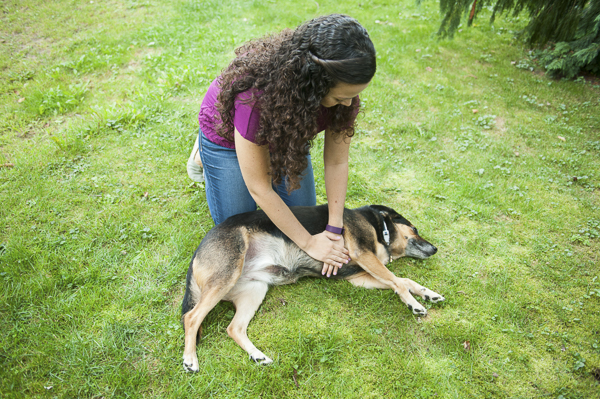



This is a great recap and something folks should bookmark for future reference. Thanks for sharing!
Great post! My mom wants to become animal certified in CPR but can’t find a class close by.
Wonderful post with important information. Thank you for sharing!
What a great post! Definitely going to bookmark this just in case! Thanks for sharing!
This is great information that I hope to never need. I shared it on my Facebook.
Amazing tips and I’m going to save this post for future reference.
We have a huge skunk problem in our area. So far, Ruby has avoided being sprayed but I’m sure it will happen eventually. Thanks for the tips!
Great post! I’ve taken several first aid workshops but they were pretty basic. I hope we never run into a skunk!
I have worked in vet offices and shelters, before, and this kind of awareness would have been so helpful! I learned so much, especially in regard to handling shock. Great post!
This is a fabulous post, great information. Thanks so much! Sharing.
Love & biscuits,
Dogs Luv Us and We Luv Them
Thank you. Great info. I would love to take a CPR/FIRST AID class for pets.
One of the most important lessons we taught pet parents when I worked at the clinic was checking gums and tissue color in case of an emergency. Great post.
Great post – it’s so important to know what to do in an emergency.
Great post! Will be sharing. I did become certified in pet CPR & First Aid. Something all pet parents should consider. Thank you for this important and informative post!